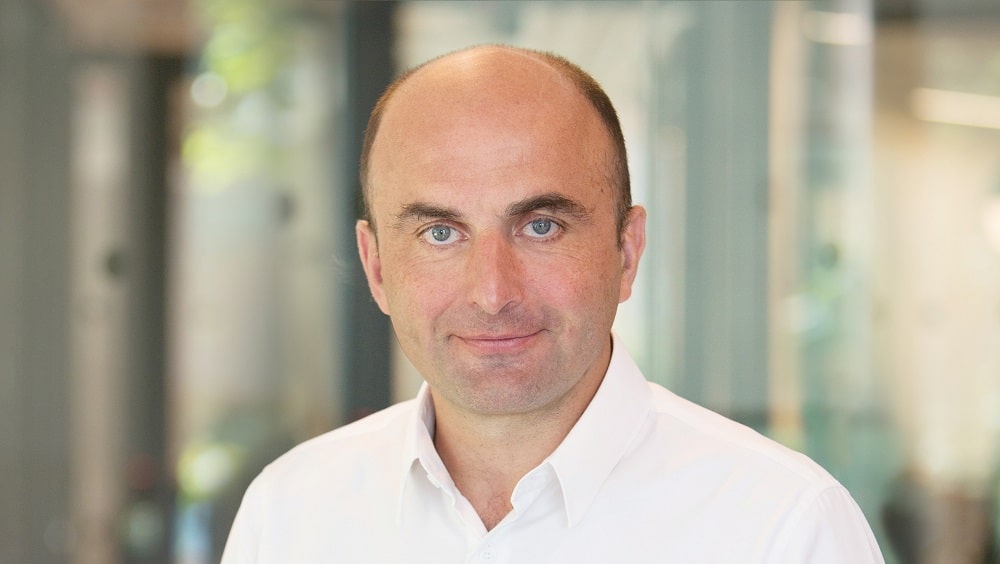With currency brokers seemingly growing on trees thanks to the advance of fintech solutions we talk to Cedric Menager, the seasoned tech entrepreneurs about why PagoFX does things better.
What separates PagoFX from all the other currency transfer providers out there?
PagoFX is an international payment service for customers now in the UK, Belgium and more recently, Spain, and it offers a unique proposition, which is simple, very transparent and low-cost from a pricing standpoint, and with the security of what you can find from a bank.
We are something that is unique and that you can’t find on the market. We are a startup but within a very large bank [Santander]. That’s what makes us unique, a combination of what we’ve seen and learnt from the fintechs about pricing, about simplicity of the user experience, and what a bank can bring as trust, as security. I don’t think there is an equivalent in the market of this combination.
How important are pricing and transparency to PagoFX?
When you look at international payments, very often, it’s presented as a bit complex or not as transparent as we do, and that’s why we try to educate our customers and to show that it’s not a completely free service – there is a commission – but we want to make it very clear and very transparent on what it is.
What sort of customer is PagoFX right for?
We’re open to any customer. Our value proposition resonates with most customers.
Whether you have a unique need and you want to perform a transaction, you have this element of security and simplicity. Or if you have more regular needs or with a higher amount, the same value plays.
Within our customer base today, we see several different types of profiles. We have a high proportion of people who have properties abroad, paying deposits, paying for services or monthly services. Then you have people who are working in the UK and helping families at home, or students living in the UK and also sending money. There are very different types of profiles, which correspond to the market, but generally speaking, our value proposition can resonate with very different types.
What was the attraction of joining PagoFX as CEO?
I’ve been in tech and payments for more than 15 years. I spent quite a significant part of my career at PayPal, which obviously do a lot of international payments.
The thing that really excited me is it’s a unique time for a bank to transform itself. They have to go through this transformation. I don’t think I would have joined a bank 20 years ago but I have the ability to bring together a team from the fintech world, with people like me but with many other team members who have joined from startups or large corporations, with people joining from Amazon, from PayPal and from Google.
There are a lot of team members from the fintech world or big tech, and we have people from the bank, who are very knowledge about banking and payments.
What I find exciting is that you can make something unique with this combination that you will never be able to do internally.
Why do you think banks are having such a tough time adapting to discount foreign exchange?
I think there are several factors. One is one of their business lines. You can’t really be as performant when you are an expert, and especially in one line of business when you offer hundreds of products like a traditional bank. There is a question of efficiency, and also, management of old portfolios, where you want to be more competitive in one area but not the other.
The other element is that some customers still value the convenience of running transactions through their bank accounts without going outside and having to manage another account.
So they accept a price difference for the convenience of managing the payments through their bank account. That price difference can be a huge amount, so now with the competitiveness of the market, more and more people are shifting to alternative solutions. We’ve seen that a lot in the UK, but now, it’s happening in other markets as well. I think now banks are taking it more and more into account and are reacting more and more, which actually is what Santander has done with us.
Where do you see PagoFX in five years’ time?
We are a bit more than six months from our initial launch, so we still have a lot to do to get the experience really at the best level for our customers. That is obviously a big priority for the coming years.
We have also the intention to expand globally, where we have the support and competitive advantage with Santander. Santander is a very global bank with a presence in more than ten markets, where the bank is in the top five of each market. Going to America will be important for PagoFX, as well as expanding in Europe.
What do you think is the main mistake people make when transferring currency abroad?
One is really looking at the price, but understanding the cost of the transfer, and that’s what we’re trying to help with our transparency. In many cases, you don’t have a very good understanding of the pricing and you’re almost like paying for the amount you will receive on the other site.
PagoFX enables you to see exactly the amount that you’re paying and exactly the amount that you will receive on the other side. People should be able to benefit from that if they do not have previous experience.
The second one is following up the evolution of the rates. If you don’t have to immediately transfer the money, you can adjust a bit on timing to look at the variation of the currency. In a world where currencies are still evolving quite a lot, we’ve been ourselves exposed to the pound variations while launching in the UK over Brexit and Covid; there have been a lot of evolutions. That’s the second thing that people should not minimise, really trying to be conscious of the evolution of the rate and trying to trade at the time where it’s optimised.
Will PagoFX do currency forwards and currency options to help with a bit of hedging?
No. At this point, we are just doing the payment transfer in itself. We’re starting to really give advice to customers, so we are planning to send them a recommendation of currencies that are at a good level for transacting, depending on the month, or maybe there are some evolutions that are positive for them, with communicating to them, hey, if you need to make a transfer in this currency at the right balance, it seems to be at the right level.
What’s your favourite book on business and investing?
One book that has been a specific inspiration where sadly, the author just passed away, is Delivering Happiness.
It’s about the story of Zappos, an online retailer in the US, which has been very successful and was finally bought by Amazon. It’s a business book but you can read it as a novel. It’s a business book with a very interesting message about how they’ve been able to use customer service as a very strong differentiator, and have it as the main point of building their reputation.
That’s something that we are leveraging as a strategy for PagoFX. What we’ve been observing as well, especially on the fintech front, is that customer service was not at the right level.
There are some cases where if you’re transferring money to a certain country, we need to validate the payment or ask some information from the customer. That can sometimes can be very painful if you don’t have the proper investment in your customers. What we’ve done is really enabling the customer to interact with real people, and that makes a big difference in the feedback that we have.
That book was a big inspiration and I asked all the team to read it. It’s been impressive to see how customer service and making it a big part of your value proposition was key for the business, and I think that’s relevant for us.
What would be your one golden rule of effective currency transfers?
I would certainly say use PagoFX. But, I think, generally speaking, I would try to find feedback from customers who have been using some of the solutions. I know there is a lot of available information online on feedback from customers. I think another one again is price transparency. I think that’s a key element for some customers.
And the third one, I think if you haven’t used any solution yet, I would advise to go for one that comes with trust and security as a value. There are many different types of payment provider offers and not all of them are as trustable as you need. So that’s a very key element to check as well.
Cedric Menager is CEO of PagoFX

Richard is the founder of the Good Money Guide (formerly Good Broker Guide), one of the original investment comparison sites established in 2015. With a career spanning two decades as a broker, he brings extensive expertise and knowledge to the financial landscape.
Having worked as a broker at Investors Intelligence and a multi-asset derivatives broker at MF Global (Man Financial), Richard has acquired substantial experience in the industry. His career began as a private client stockbroker at Walker Crips and Phillip Securities (now King and Shaxson), following internships on the NYMEX oil trading floor in New York and London IPE in 2001 and 2000.
Richard’s contributions and expertise have been recognized by respected publications such as The Sunday Times, BusinessInsider, Yahoo Finance, BusinessNews.org.uk, Master Investor, Wealth Briefing, iNews, and The FT, among many others.
Under Richard’s leadership, the Good Money Guide has evolved into a valuable destination for comprehensive information and expert guidance, specialising in trading, investment, and currency exchange. His commitment to delivering high-quality insights has solidified the Good Money Guide’s standing as a well-respected resource for both customers and industry colleagues.
You can contact Richard at richard@goodmoneyguide.com

